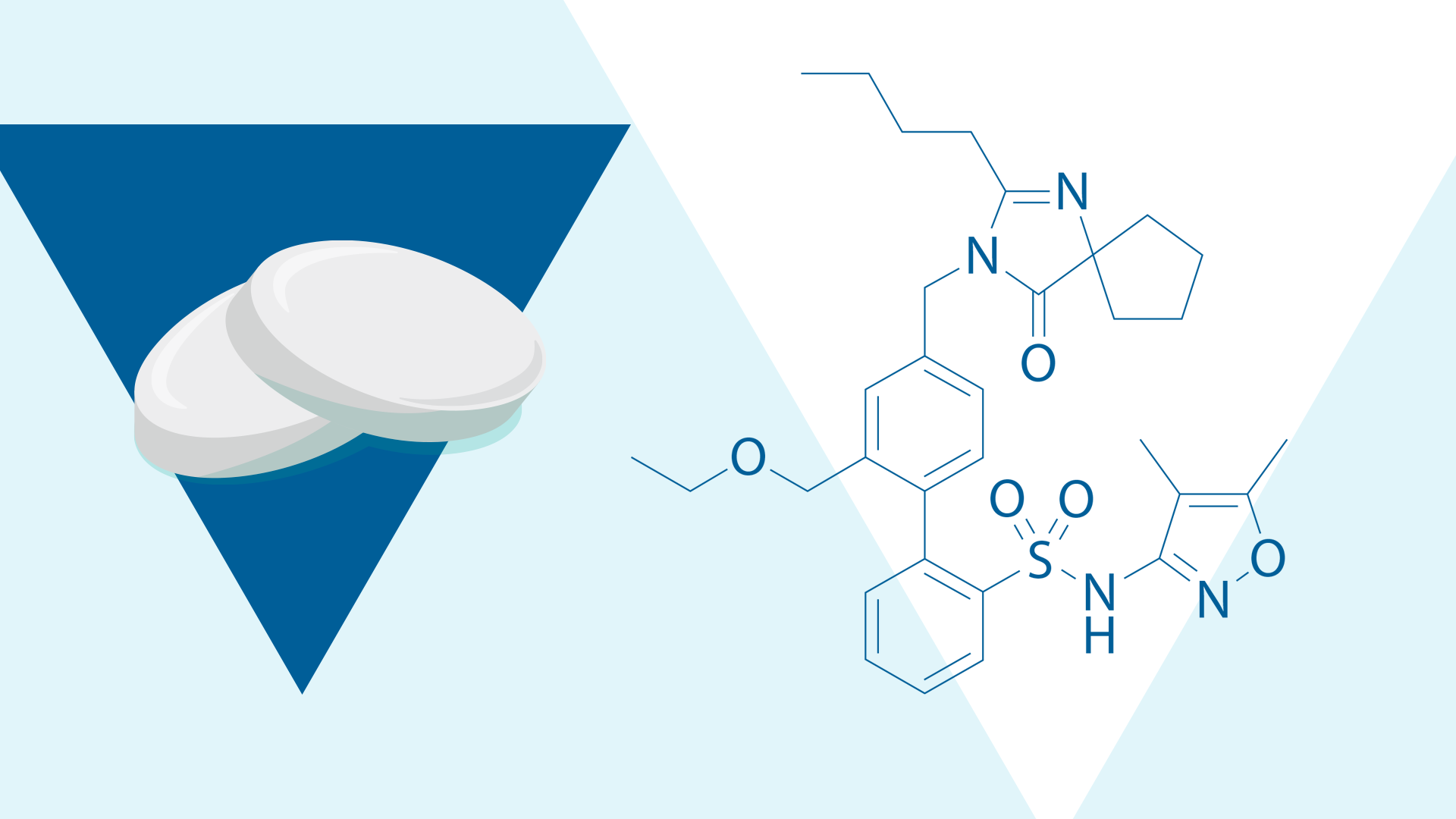
Sparsentan. Dual Angiotensin II AT1 Receptor Blocker and Endothelin ETA Receptor Antagonist, Treatment of Focal Segmental Glomerulosclerosis, Treatment of IgA Nephropathy
Topics: Nephrology FSGS IgAN Sparsentan DUET DUPLEX PROTECT Review Publication Summary
Trachtman H, Hogan JJ, Tesar V et al.
http://dx.doi.org/10.1358/dof.2020.45.2.3058863
Summary
Clinical development of sparsentan for IgA nephropathy and focal segmental glomerulosclerosis (FSGS) focused on inhibiting the renin-angiotensin system (RAS) and the endothelin (ET) system 1
Background
Concurrent inhibition of the renin-angiotensin system (RAS) and the endothelin (ET) system is a potential approach for the treatment of proteinuric chronic kidney disease (CKD).1
Sparsentan is a novel dual ET and angiotensin II (Ang II) receptor antagonist undergoing clinical development for the treatment of focal segmental glomerulosclerosis (FSGS) and IgA nephropathy.1
Aim
This review article summarizes the role of dual ET and Ang II inhibition in CKD, and the characteristics of sparsentan, as well as the rationale for its use in IgA nephropathy and FSGS.1
Findings
The RAS and ET systems are important to the pathophysiology of FSGS and IgA nephropathy1
RAS
- Ang II stimulates vasoconstriction, cell growth, extracellular matrix development and has proinflammatory activity, leading to glomerulosclerosis and tubulointerstitial fibrosis.2,3
- Aldosterone also has prosclerotic, fibrogenic, and proteinuric effects.4
- Initial use of RASi, including Ang II receptor antagonists, is recommended by guidelines for management of proteinuria in FSGS and IgA nephropathy.5
- Endothelin-1 (ET-1) acts as a preglomerular vasoconstrictor.6
- ET-1 also promotes vasoconstriction, fibrosis, and extracellular matrix production.6,7
- These proinflammatory and profibrotic effects can be inhibited by endothelin receptor antagonists (ERAs).8
Rationale for dual RAAS/ET-1 inhibition in FSGS and IgA nephropathy
- Clinical benefits of dual blockade of RAS/ET-1 with avosentan or atrasentan added to RASis have been demonstrated in diabetic nephropathy.9,10
- Although RASis are recommended in both FSGS and IgA nephropathy, there remains a significant unmet need for effective and well-tolerated treatments that can reduce proteinuria and slow the loss of kidney function.1
Highlights of clinical studies of sparsentan in IgA nephropathy and FSGS
DUET
- Design: Phase 2, randomized, active-control, dose-escalation study of sparsentan in primary FSGS.11 Patients were randomized to sparsentan or irbesartan for an 8-week double-blind phase, followed by an open-label extension (all patients received sparsentan).11
- Learn about the efficacy and safety findings from the DUET trial and read more about partial and complete proteinuria remission in the DUET Open-Label Extension Study.
DUPLEX
- Design: Phase 3, randomized, multicenter, double-blind, active-controlled study of sparsentan versus irbesartan in patients with primary or genetic FSGS.12 The primary efficacy endpoint was the slope of estimated glomerular filtration rate (eGFR) from Week 6 to Week 108.12
- Read more about the efficacy and safety findings from the DUPLEX trial and its post hoc analyses of proteinuria thresholds and the effect on progression to kidney failure.
PROTECT
- Design: Phase 3, randomized, multicenter, double-blind, parallel-group, active-control study evaluating the efficacy and safety of sparsentan in IgA nephropathy in comparison to irbesartan.13 The primary endpoint was change from baseline to Week 36 in UPCR.13
- Read more about the two-year efficacy and safety findings from the PROTECT trial.
Key takeaway
Dual RAS/ET-1 inhibition has shown clinical benefits in studies of IgA nephropathy, and tolerability has been favorable across the studies described above.1 Future studies may be conducted to evaluate sparsentan in other glomerular diseases.1
Footnotes
Sparsentan is not FDA-approved for the treatment of FSGS.
Ang II, angiotensin II; CKD, chronic kidney disease; eGFR, estimated glomerular filtration rate; ERA, endothelin receptor antagonist; ET, endothelin; ET-1, endothelin-1; FSGS, focal segmental glomerulosclerosis; IgA, immunoglobulin A; RAS, renin-angiotensin system; RASi, renin-angiotensin system inhibitor; UPCR, urine protein-creatinine ratio.
- Trachtman H et al. Drugs Future. 2020;45(2):79.
- Wennmann DO et al. Semin Nephrol. 2012;32(4):377-384.
- Rüster C, Wolf G. J Am Soc Nephrol. 2011;22(7):1189-1199.
- Sun GP et al. J Am Soc Nephrol. 2006;17(8):2193-2201.
- Kidney Disease: Improving Global Outcomes (KDIGO) Glomerular Diseases Work Group. Kidney Int. 2021;100(4S):S1-S276.
- Kohan DE et al. Physiol Rev. 2011;91(1):1-77.
- Simonson MS, Ismail-Beigi F. J Biol Chem. 2011;286(13):11003-11008.
- Watson AM et al. Diabetologia. 2010;53(1):192-203.
- Mann JF et al. J Am Soc Nephrol. 2010;21(3):527-535.
- de Zeeuw D et al. J Am Soc Nephrol. 2014;25(5):1083-1093.
- Trachtman H et al. J Am Soc Nephrol. 2018;29(11):2745-2754.
- Rheault MN et al. N Engl J Med. 2023;389(26):2436-2445.
- Heerspink HJL et al. Lancet. 2023;401(10388):1584-1594.
MA-SP-24-0106 | June 2025